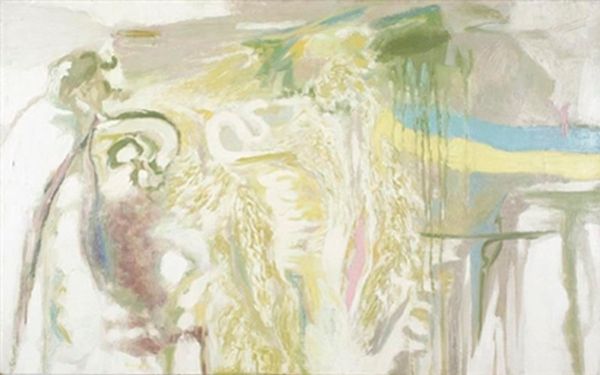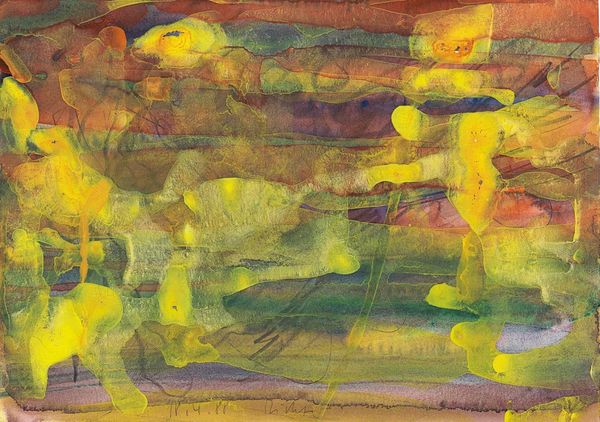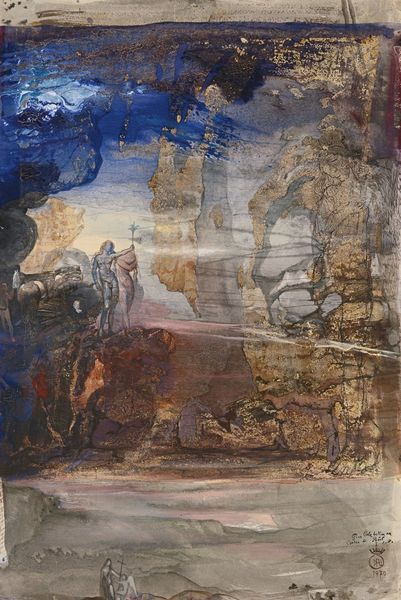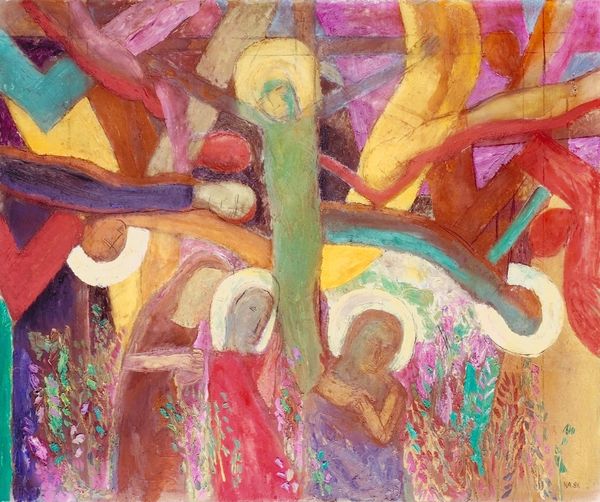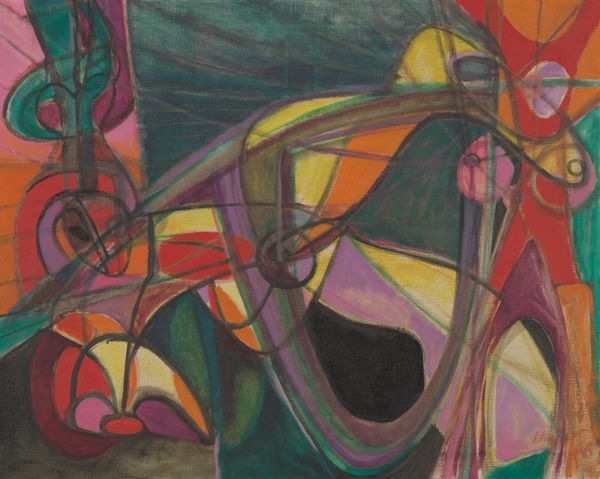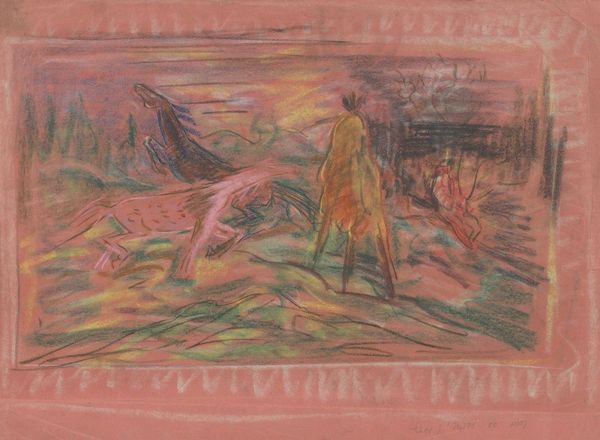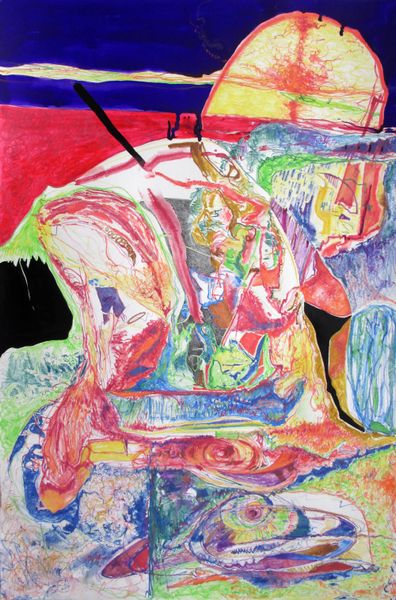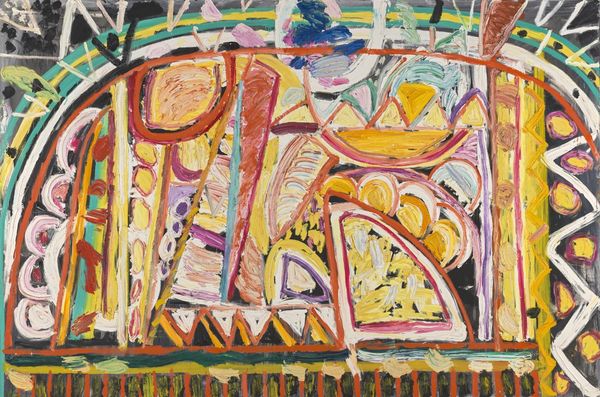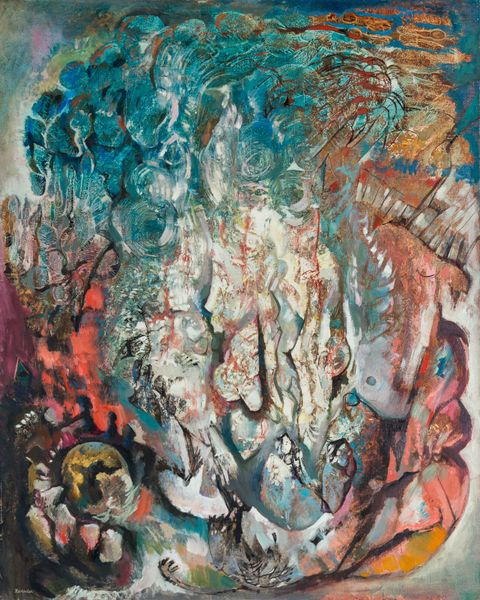
Dimensions: 49 x 32 cm
Copyright: Public domain
Curator: Looking at Georgy Yakulov's "Spring Walk" from 1915, it’s like peering into a vibrant, almost dreamlike scene, created with tempera on canvas. The piece is currently held in the Tretyakov Gallery in Moscow. Editor: The initial impression is certainly dreamlike. The color palette feels strangely detached from naturalism. It has a definite fairytale aspect...almost theatrical with those layers and the obscured figures. Curator: Indeed. Notice how Yakulov employs what could be called 'Fauvist' strategies with liberated, non-naturalistic color, yet applied in a layered, almost semi-abstracted landscape. He abandons strict representation, leaning into emotive color and dynamic composition. The diagonal axes, the color contrasts… all orchestrate visual momentum. Editor: The horses pull chariots but don't seem real; there's this overriding visual tension, I’d almost say angst that pervades it despite the springlike palette. I mean what is even implied with the title; there's very little "Spring-like" quality to this scene. It is more so the idea of that renewal of "Spring-like" in an abstract context that makes sense. Do you think the fractured planes suggest psychological turmoil? Curator: It's possible to read the fractured forms through a psychological lens. But I think the artist is really engaged with the dynamics of form, the geometry underlying our perception of space and movement, he uses a Fauvist style. It suggests also dynamism and a very cubist kind of idea when viewed through a modern scope. Editor: Perhaps both readings aren’t mutually exclusive here. The symbols in the paintings of horses in chariots usually invoke cultural power dynamics. Considering 1915, a period mired in war, it seems to be a symbolic reflection on power in chaos—even spring's renewal becomes distorted. It’s very telling when interpreted from an iconographic perspective. Curator: So the piece can suggest social or perhaps even moral commentary as a formal echo of the era? But on its own it is dynamic regardless of subject or perspective of symbolic. It certainly offers a look to his interest in light. Editor: Definitely something for one to think about how art movements influence visual memory and reconfigure symbolic significance through an array of mediums in an era that has become our modernity today.
Comments
No comments
Be the first to comment and join the conversation on the ultimate creative platform.
